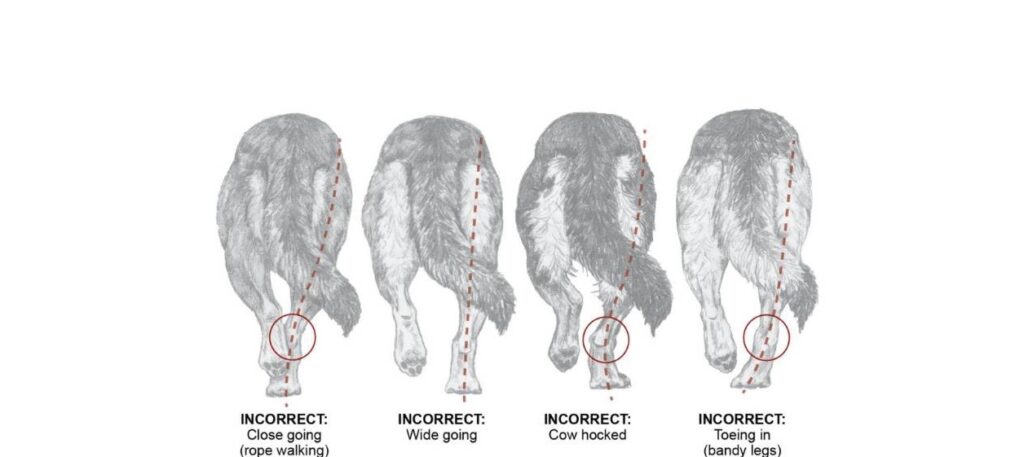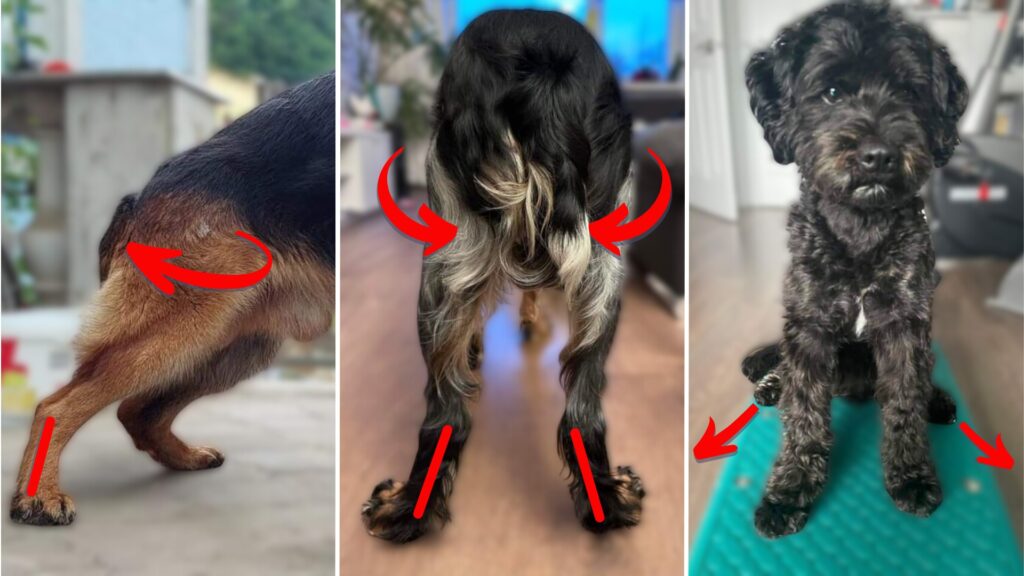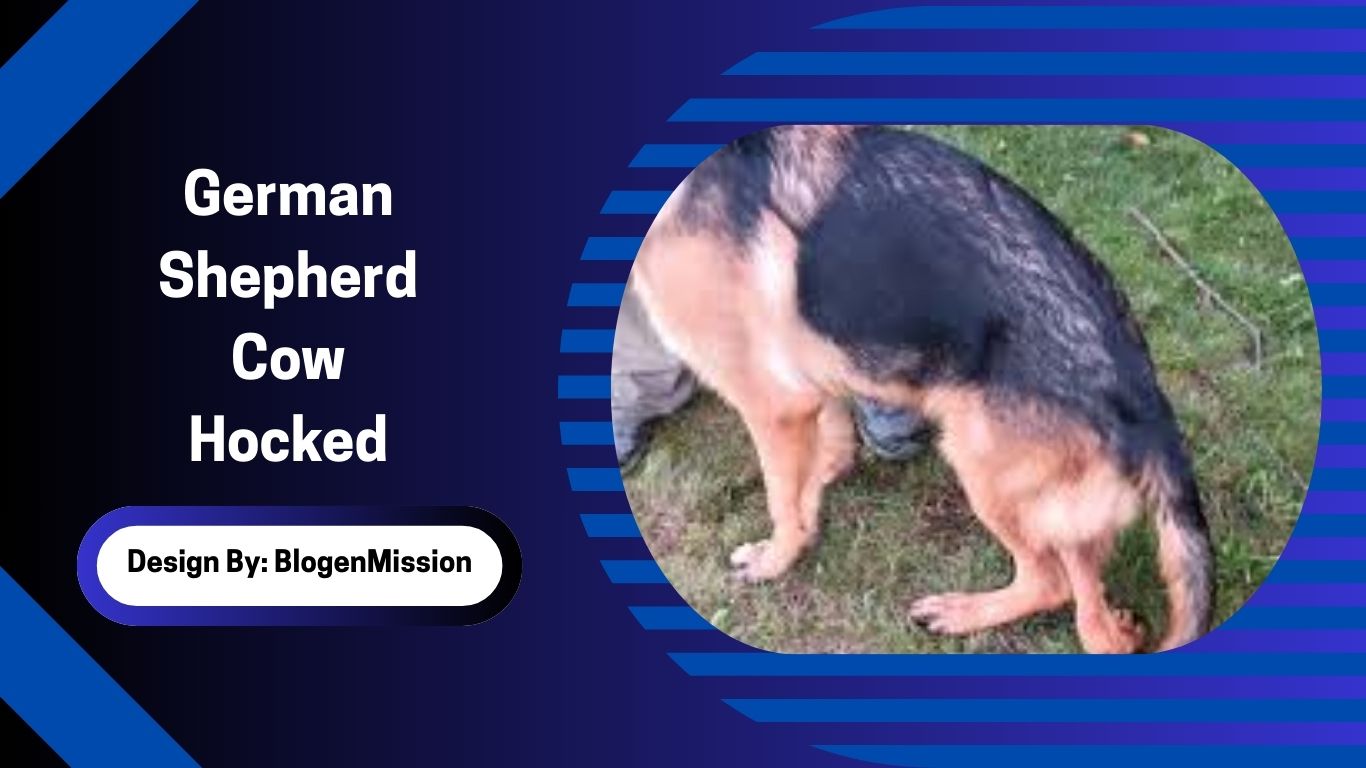German Shepherd cow hocked legs occur when hind hocks turn inward and feet point outward, affecting gait, mobility, and joint health. Causes include genetics, poor breeding, growth issues, or muscle weakness.
German Shepherds are one of the most loyal, intelligent, and versatile breeds in the world. Known for their strength, agility, and ability to work alongside humans, they have become one of the most popular family and working dogs. However, like many large breeds, they can face structural issues that affect their movement and quality of life. One of the most common structural concerns is cow hocked legs in German Shepherds.
Cow hocks occur when a dog’s hocks (the joint below the knee at the back legs) turn inward, causing the rear feet to point outward. While some German Shepherds may have mild cow hocks without serious consequences, severe cases can impact mobility, joint health, and overall well being.
In this article, we’ll dive deep into what cow hocked means in German Shepherds, its causes, effects, prevention, and solutions to help owners make the best decisions for their dog’s health.
What Does Cow Hocked Mean in German Shepherds?
Cow hocked in German Shepherds refers to a structural abnormality where the hocks of the hind legs angle inward while the feet point outward. This condition disrupts the ideal straight alignment of the legs and may affect movement.
Instead of moving with a strong, balanced stride, a cow hocked German Shepherd may show signs of weakness in the hindquarters, reduced efficiency in running, or uneven wear on joints and muscles.
Causes of Cow Hocks in German Shepherds

1. Genetics
The most common cause of cow hocks is genetics. Some dogs inherit structural weaknesses from their parents. Poor breeding practices without attention to physical soundness increase the risk.
2. Rapid Growth in Puppies
German Shepherd puppies grow quickly, and during growth spurts, bones may develop faster than muscles. This imbalance sometimes leads to temporary or permanent cow hocks.
3. Poor Breeding Standards
Certain breeders may prioritize appearance (such as sloped backs) over health, unintentionally producing puppies prone to joint misalignments like cow hocks.
4. Muscle Weakness or Improper Exercise
Weak muscles around the hips and legs can contribute to poor posture and abnormal stance. Lack of proper exercise or over exercising puppies may worsen the condition.
5. Nutritional Deficiencies
Improper nutrition during a German Shepherd’s developmental stages may negatively affect bone growth and lead to structural problems, including cow hocks.
How to Identify a Cow Hocked German Shepherd?
- Rear stance: The hocks point inward and the feet turn outward.
- Movement: The dog may appear to waddle or swing its hind legs when walking or running.
- Muscle development: Poor muscle tone in the hindquarters may make cow hocks more visible.
- Comparison to breed standard: A properly structured German Shepherd should have straight, strong hind legs with balanced stride and no inward angling of the hocks.
Owners who suspect their dog is cow hocked should consult a veterinarian or canine orthopedic specialist for an evaluation.
Effects of Cow Hocks in German Shepherds
1. Reduced Performance
German Shepherds used as working dogs, police dogs, or sporting dogs may struggle with endurance, agility, and balance if they are severely cow hocked.
2. Joint Strain
Misaligned legs put extra pressure on hips, knees, and hocks, increasing the risk of hip dysplasia, arthritis, or ligament damage.
3. Gait Abnormalities
Cow hocked dogs often have an inefficient gait that causes faster fatigue and may limit exercise tolerance.
4. Risk of Injury
Weak alignment makes joints more prone to injury during running, jumping, or other physical activities.
5. Aesthetic Concerns
While mild cow hocks may not cause major health problems, they can disqualify a German Shepherd from show competitions where proper structure is judged.
Can Cow Hocks Be Fixed in German Shepherds?
1. Mild Cases
Mild cow hocks may not require treatment. With proper exercise, muscle strengthening, and balanced nutrition, the condition can be managed without affecting the dog’s lifestyle.
2. Exercise and Conditioning
Controlled exercise such as swimming, walking on soft ground, and uphill walks can help strengthen the hindquarters. Avoid excessive jumping or high impact activities in puppies.
3. Nutrition
A balanced diet rich in calcium, phosphorus, protein, and essential vitamins supports proper bone growth and joint health. Overfeeding or excessive supplements should be avoided.
4. Weight Management
Excess weight increases strain on joints, making cow hocks worse. Keeping your German Shepherd at a healthy weight is essential.
5. Veterinary Care
In severe cases, a veterinarian may recommend physical therapy, orthopedic support, or in rare situations, surgery.
Preventing Cow Hocks in German Shepherds

- Choose puppies from reputable breeders who prioritize health and sound structure.
- Provide a balanced diet from puppyhood to adulthood.
- Avoid over exercising puppies during growth stages.
- Engage in muscle strengthening activities to build proper rear end support.
- Schedule regular vet checkups to detect early signs of joint or growth issues.
Living with a Cow Hocked German Shepherd
Many German Shepherds with mild cow hocks live happy, active, and healthy lives. The condition doesn’t always mean pain or disability. Owners should monitor their dog’s movement, ensure proper exercise, and work with veterinarians to maintain joint health.
Even if cow hocks prevent a dog from being a show or competition dog, they can still thrive as loving companions and loyal family pets.
FAQs:
1. Can cow hocks be completely corrected in German Shepherds?
Complete correction is rare, but management is possible. Through exercise, balanced nutrition, weight control, and veterinary care, owners can reduce severity, improve mobility, and maintain a cow hocked German Shepherd’s quality of life.
2. Are cow hocks painful for German Shepherds?
Mild cases are often painless, but severe cow hocks can strain hips, knees, and ligaments, leading to discomfort or arthritis over time. Regular monitoring helps prevent complications and ensures your dog’s comfort.
3. Do show standards accept cow hocked German Shepherds?
No. Breed standards emphasize strong, straight legs with balanced gait. German Shepherds with visible cow hocks are generally disqualified in dog shows, making structural soundness essential for competitive breeding or show eligibility.
4. How do breeders prevent cow hocks in puppies?
Responsible breeders prioritize genetics, health screenings, and selective pairing. Avoiding sloped back breeding lines, ensuring proper nutrition for growing puppies, and choosing healthy parent dogs reduce the risk of producing cow hocked German Shepherd puppies.
5. Can exercise worsen cow hocks in German Shepherds?
Yes, if excessive or high impact. Intense jumping or running on hard surfaces may increase strain. Low impact activities like swimming, walking, and controlled uphill exercises are safer for strengthening muscles without worsening cow hocks.
6. How to correct a dog with cow hocked legs?
Correction depends on severity. Balanced nutrition, weight management, controlled exercise, and veterinary guidance strengthen muscles, improve posture, and reduce stress on joints, enhancing overall movement.
7. What is the rarest type of German Shepherd?
The rarest German Shepherd type is the panda German Shepherd, known for its unique black and white coat pattern, representing less than 3% of the breed’s population worldwide.
Conclusion:
Cow hocked German Shepherds may face challenges, but with proper care, they can still live healthy, active lives. While genetics play the biggest role, diet, exercise, and responsible breeding also influence the condition. Owners should focus on muscle strengthening, weight management, and routine vet care to reduce risks and support long term joint health. Even though cow hocks may limit show potential, they rarely affect the dog’s loyalty, companionship, and ability to be a loving family member.
Related Post:
- Big Boned German Shepherd – Guide for Owners and Enthusiasts!
- Hotels Where Pets Stay Free – Guide to Pet-Friendly Lodging!
- Why Is My Dog Panting So Much At Night – Causes and Solutions for Canine Health!
- How Long Do Pet Allergy Symptoms Last – Comprehensive Guide!
- Can I Pet That Dog Shirt – Stylish Dog Love!
